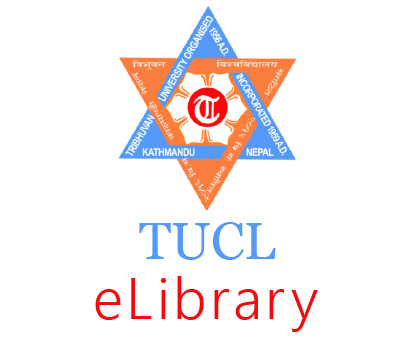Please use this identifier to cite or link to this item:
https://elibrary.tucl.edu.np/handle/123456789/19114Full metadata record
| DC Field | Value | Language |
|---|---|---|
| dc.contributor.author | BHUSAL, DAKSHINA | - |
| dc.date.accessioned | 2023-08-17T05:16:53Z | - |
| dc.date.available | 2023-08-17T05:16:53Z | - |
| dc.date.issued | 2023-08-17 | - |
| dc.identifier.uri | https://elibrary.tucl.edu.np/handle/123456789/19114 | - |
| dc.description.abstract | The Crassulaceae family includes Kalanchoe pinnata (synonym: Bryophyllum pinnatum), also known as "Pattharchatta" in Nepali. The plant's therapeutic and medical properties contain wound-healing, antioxidant, antiproliferative, antimicrobial, anti allergic, analgesic, nephroprotective, gastroprotective, antidiabetic, antidepressant, sedative, antilithiatic, chemoprotective, antihypertensive and immunosuppressant activities. The current study examined phytochemical screening, GC-MS, UV, FT-IR, total phenolic and flavonoid content. Extracts of K. pinnata were also analyzed for antimicrobial, antioxidant, antidiabetic, cytotoxicity, thin-layer, and column chromatography. The air dried powder of K. pinnata were extracted using seven different solvents: hexane, DCM, chloroform, ethyl acetate, acetone, methanol, and water. The aqueous extract outperformed the other six, yielding 14.50 g, whereas ethyl acetate produced only 0.21 g. Phytochemical screening discovered the presence of flavonoids, phenolic chemicals, terpenoids, tannins, steroids, and carbohydrates. The antioxidant activity was assessed by DPPH free radical scavenging method. The 3,5- dinitrosalicylic acid (DNSA) technique revealed a range of α-amylase inhibition properties. Antimicrobial susceptibility tests were tested against Bacillus subtilis, Escherichia coli, and Candida albicans. All the extracts showed better antimicrobial properties. The quantitative analysis of phytochemicals revealed that the TPC and TFC of the ethyl acetate is higher as comparison to the methanol extract The IC50 values of chloroform, ethyl acetate and methanol extracts were 2219.41 µg/mL, 365.22 µg/mL, and 293.53 µg/mL, respectively, in the antioxidant assay. The IC50 values of acetone, ethyl acetate and methanol extracts were 285.71 µg/mL, 504.21 µg/mL, and 195.39 µg/mL, respectively, in the α-amylase inhibition assay. The LC50 values of chloroform, acetone and methanol extracts were 0.181 mg/mL, 0.175 mg/mL, and 0.29 mg/mL respectively. The best TLC was shown by methanol extract in the Acetone: Hexane solvent system. From the column chromatography, single spot is obtained at 1% Ac: Hex and 5% Ac: Hex. The existence of multiple bonds, aromaticity, conjugation, and unsaturated organic molecules were confirmed through UV-visible spectrophotometer's results. The presence of O-H, C-H, C=O, -CH2, -NO2 and C-O were verified by FT-IR findings. | en_US |
| dc.language.iso | en | en_US |
| dc.publisher | Amrit Campus | en_US |
| dc.subject | Kalanchoe pinnata | en_US |
| dc.subject | extraction | en_US |
| dc.subject | chemical | en_US |
| dc.subject | biological analysis | en_US |
| dc.title | EVALUATION OF CHEMICAL CONSTITUENTS AND BIOLOGICAL PROPERTIES OF EXTRACTS OF LEAVES OF Kalanchoe pinnata (LAM.) PERS FROM RUPANDEHI DISTRICT OF NEPAL | en_US |
| dc.type | Thesis | en_US |
| local.institute.title | Amrit Campus, Lainchaur | en_US |
| local.academic.level | Masters | en_US |
| local.affiliatedinstitute.title | Amrit Campus | en_US |
| local.otherinstitute.title | Amrit Campus | en_US |
| Appears in Collections: | Chemistry | |
Files in This Item:
| File | Description | Size | Format | |
|---|---|---|---|---|
| Dakshina Bhushal.pdf | 2.25 MB | Adobe PDF | View/Open |
Items in DSpace are protected by copyright, with all rights reserved, unless otherwise indicated.
